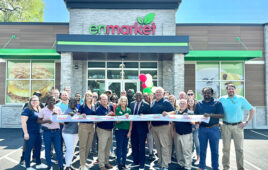Cathy Duncan, Senior Product Manager, DTN Refined Fuels
Just a few short years ago, therewere a handful of petroleum products sold in retail outlets across thecountry. Fast forward to today—itwouldn’t be unusual for a family on vacationthis summer to fill its tank with half a dozendifferent gasoline products before it reachesits destination. Along the route, gasolinewith 10% ethanol (E10) in a large metropolitan area, low RVP in another smaller cityand conventional gas of varying octane levels may be available. And what they pay forthose fill-ups could be just as different.
Each year, the summer driving seasoninfluences prices at the pump. But withmore product options than ever and growing demand for renewable fuels like ethanol,the economics become more difficult to predict. Crude oil is not the only factor to follow;local market prices, supply and geo-politicalevents also play a role.
So what are the biggest opportunitiesand challenges? Faced with growing competition at every front, today’s retailers haveto re-think their fuel strategy for how theybuy, what they buy and even who they’re buying from.
How They Buy Fuel
Fuel inventory is a major cash outlayfor most gasoline retailers. In a rapidly rising market, replacing the fuel inventorybeing sold sometimes requires significantoperating capital. Optimizing inventoryand replacing it as efficiently as possiblebecomes critical to protect margins. Whilethe way fuel can be purchased varies widelyamong retailers, certain indicators apply tomost.
While market swings of a few cents mayhave little impact on inventory replacement,the industry has become accustomed tolarger and more frequent price movements.Supply disruptions, political happeningsboth at home and abroad and local marketactivity play a greater role than ever before in influencing rack prices.
The difference in buying this morning versus this afternoon can be significant, andtoday versus tomorrow can be even moreso. By following the factors driving price volatility and influencing local markets, smartgasoline retailers can take steps to improvetheir odds and their margins. By staying insync with these factors, they can often havea jump on price changes before they actually happen.
Fortunately for gasoline retailers, thistype of market intelligence is more commonly available. Today’s smart retailershave access to their own rack pricing, theircompetitors’ pricing and even local cashmarket prices that can include estimatedsupplier cost. They receive e-mail alerts forlocal market and price changes throughoutthe day. This type of intelligence helps thebuyer make the most informed decision,often saving several cents a gallon.
Renewable Fuels—The Future?
Changing fuel products have introduceda wider acknowledgement of alternativefuels as individual products and as additives. For example, the largest demand forethanol comes from blending up to 10% ethanol into regular gasoline (E10), primarily inlarge cities. That demand is building. A surprising fact for some is that nearly half thegasoline sold in the United States containssome level of ethanol. In part due to fuel”credits,” U.S. automakers are pledging tohave 50% of their fleet be flex-fuel vehicles utilizing E85 or biodiesel. And recently, theU.S. Department of Agriculture said farmersnationally will increase their corn acreage by15% this year to the greatest amount sinceWorld War II to meet the growing demand.
For retailers, the decision to carry E85or biodiesel may very well be driven bybasic economics. While the governmentis pressing for wider acceptance of E85,other factors make it difficult to adopt. Mostrenewable fuels require special handlingas well as labeling for the consumer. Forbranded store locations, if E85 is allowed,there are typically tight restrictions on howit can be marketed; most often it must bedispensed from its own unit and not partof an existing multi-hose dispenser. In manycases, it’s not even allowed under the mainfuel canopy.
Some estimates claim that due to mileage efficiencies, E85 has to be at least 20to 30 cents a gallon cheaper to competewith gasoline on price. The question thenbecomes whether a location can effectivelymarket the product at a street price that protects their investment. Even the RenewableFuels Association sees the future of ethanol primarily as an additive. “If you havea pump that sells E85 but you don’t havecustomers pull up to that pump, why do youwant to bother?” said Bob Deneen, its chieflobbyist. These are the kinds of economicfactors that will ultimately decide the viability of renewable fuels.
Cathy DunCan has more than 20 years of accounting and business process experience in the energy sector. Duncan oversees product strategy and direction for DTN’s RefinedFuels division. She currently serves as chairmanof the Motor Fuels committee for the PetroleumConvenience Alliance for Technology Standards(PCATS) and can be reached at [email protected].




